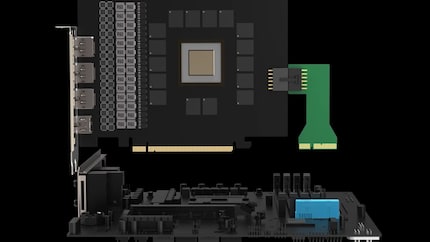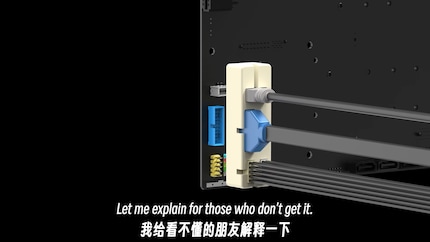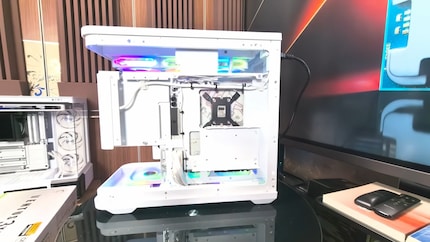
Opinion
A trend I hope will last: connectors on the back of motherboards
by Kevin Hofer

BTF 3.0 aims to finally make wireless PC builds a reality - a single 50-pin connection for up to 2145 watts.
Hand on heart: Who loves cable management? The hours of fiddling, the bloody fingertips and the back of the case still ends up looking like a plate of spaghetti carbonara. I hate it. That's exactly why I think the idea of «Back-Connect» mainboards, where all the connections are on the back, is so cool. These things have been springing up like mushrooms recently and various manufacturers are jumping on the bandwagon. The tinkerer DIY-APE is also responsible for this
The problem so far: the cables have been hidden, but not really eliminated. You still have to pull individual cables for the CPU, GPU and all the rest. But that could soon change. The name of the revolution: BTF 3.0.
As is so often the case, the story begins with a frustrated PC hobbyist. DIY-APE looked at his Mac Pro and thought: Why the hell is my gaming PC a single tangle of cables? So he set about changing that. Without much experience, but with a vision: PCs that look as clean on the inside as an Apple product.
BTF 2.0 was a start. Connections moved to the back, cables disappeared from view. All well and good, but you still have to plug in what feels like a hundred cables individually. That's annoying.
This is where BTF 3.0 comes into play - and I'm not exaggerating when I say it's brilliant. A single 50-pin connector. That's it. It supplies the CPU, GPU and all the rest with power. The thing packs 2145 watts.

«Completely exaggerated!», you might be thinking. DIY-APE counters: server power supplies laugh at such figures. And let's be honest - with the upcoming GPU generations, that might not be so far-fetched.
The clever thing about BTF 3.0: It's not a «eat or die» standard. Your old graphics card without BTF support? No problem. An angle adapter makes it compatible. New GPUs with BTF 3.0 get their own connector directly on the board - up to 1000 watts of power included.

Asus is already doing something similar with its GC-HPWR connector, but BTF 3.0 takes the concept to its logical conclusion. No more hidden cables under any covers. Simply: card in, done.
BTF 3.0 is more than just a fat connector. It is a philosophy. Case fans? Come with pre-routed cables and integrated RGB hubs. AIO water cooling? Only with short hoses. Even USB-C ports in strategic places for quick plugging and unplugging are planned.

The front panel connections remain separate - for good reason. Not every enclosure is the same, and DIY-APE wants to maintain maximum compatibility. Sensible.
DIY-APE didn't stop at theory. Together with Colorful and Sego, he built a complete PC. The result? From the front: perfect. Not a single cable to be seen. From the back: okay, a few cables are still there, but they are so neatly laid that it looks like it was intended.

Of course, BTF 3.0 is still a long way off at the moment. But what dreams! DIY-APE has proven with its concept that it can also be clean.
The question is not whether BTF 3.0 is coming. The question is which manufacturer will be the first to go all-in. MSI? Asus? Gigabyte? Whoever it is - my money is already ready. Because let's be honest: after the first cable-free build, nobody wants to go back to the tangle of cables.
From big data to big brother, Cyborgs to Sci-Fi. All aspects of technology and society fascinate me.
From the latest iPhone to the return of 80s fashion. The editorial team will help you make sense of it all.
Show all